Harley-Davidson Developing Emergency Autonomous Braking System
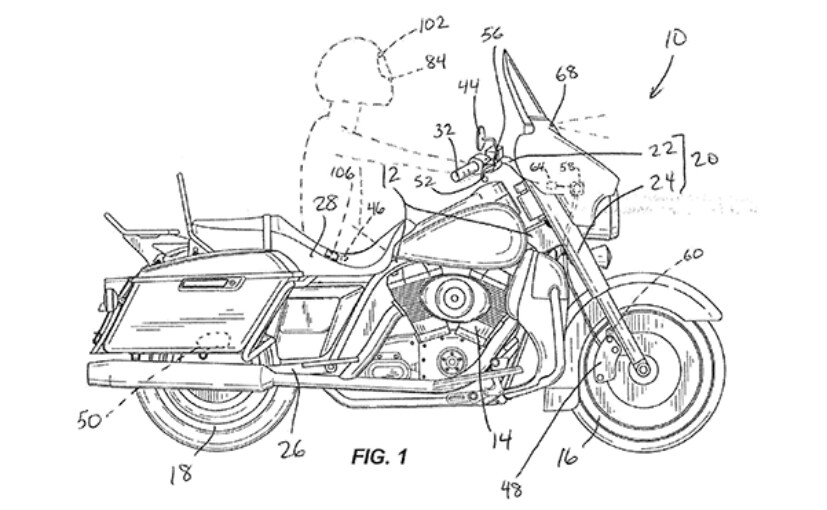
- Latest patent application reveals autonomous braking system
- The system uses several sensors on bikes to predict collisions
- It's not clear if the system will make it to a production model
Harley-Davidson is working on an Emergency Autonomous Braking System for the company's next generation motorcycles. Latest patent images filed by the American motorcycle manufacturer reveal that Harley-Davidson plans to use several sensors on the motorcycles to scan the motorcycle's path for any hazards that may cause a frontal collision, such as a car making a sudden turn or even an animal running across the highway. A controller processes the data and if it predicts an imminent collision, it automatically applies the bike's brakes and actuate the clutch to slow down and even stop the motorcycle.
The problem is that, on a motorcycle, such unexpected and sudden braking may throw the rider off balance, in the absence of seat belts, like in a car. The solution in Harley-Davidson's system is that additional sensors are used to determine whether the rider is physically and mentally prepared for emergency braking. The additional sensors on the handlebar grips determine if the rider has both hands on the handlebar, and sensors on the seat to determine if the rider is standing up on the footpegs, and even cognitive sensors mounted on the instrument panel and even inside the helmet to track the rider's eyes.

(Patent drawings reveal where warnings will be activated on the bike for a potential collision detected by sensors)
If these sensors determine the rider is not prepared for emergency braking by the autonomous braking system, the system turns on a series of warning indicators on the rear view mirrors and instrument panel , audio warnings, and even vibrations from haptic indicators in the handlebar and seat. Additionally, the system may also apply braking briefly, to make the rider aware of the autonomous system kicking in. If the rider still doesn't respond, the system will wait a few milliseconds before triggering the autonomous braking system and slowing down the motorcycle. If the system determines the rider is alert enough, it will start applying the emergency braking. And if the rider has already applied brakes, the system will assist by applying additional braking pressure.
However, the autonomous braking system may be over-ridden if the sensors determine the rider has the situation under control and assistance is not required. The technology is still in the patent stage, so there's still no confirmation if and when Harley-Davidson will start introducing this technology on a production ready model. It remains to be seen if at all such a rider assistance electronic system will be introduced in future or if it is developed into a completely different system altogether.
Trending News
Latest News
 Jaiveer Mehra | Dec 8, 20252026 Mercedes-Benz GLB SUV Makes Global Debut; EV Offers Up To 631 km RangeThe second-gen GLB is larger than its predecessor and will become available in both EV and internal combustion derivatives in the coming months.4 mins read
Jaiveer Mehra | Dec 8, 20252026 Mercedes-Benz GLB SUV Makes Global Debut; EV Offers Up To 631 km RangeThe second-gen GLB is larger than its predecessor and will become available in both EV and internal combustion derivatives in the coming months.4 mins read Jaiveer Mehra | Dec 8, 2025FADA Sales Nov 2025: GST Benefits, Discount Offers Push Post Festive Season Sales; Auto Industry Reports 2 Per Cent GrowthAs per FADA, the peak festive season vehicle registrations ended in October 2025, as against November 2024 last year, putting November vehicle sales against a higher base.4 mins read
Jaiveer Mehra | Dec 8, 2025FADA Sales Nov 2025: GST Benefits, Discount Offers Push Post Festive Season Sales; Auto Industry Reports 2 Per Cent GrowthAs per FADA, the peak festive season vehicle registrations ended in October 2025, as against November 2024 last year, putting November vehicle sales against a higher base.4 mins read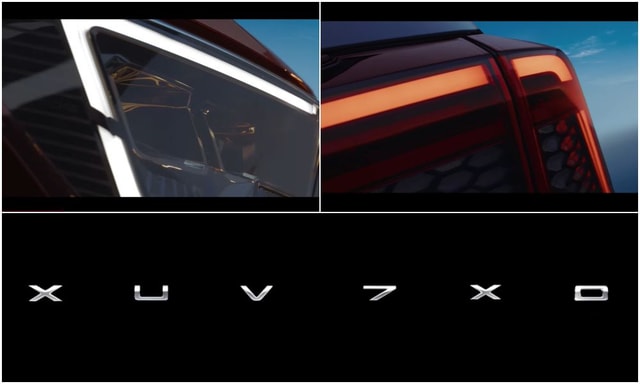 car&bike Team | Dec 8, 2025Mahindra XUV 7XO (XUV700 Facelift) To Debut On January 5, 2026: Watch The First TeaserOver four years on from the launch of the original, the XUV700 facelift will arrive with a new name and more than a few cues borrowed from the recently launched XEV 9S electric SUV.2 mins read
car&bike Team | Dec 8, 2025Mahindra XUV 7XO (XUV700 Facelift) To Debut On January 5, 2026: Watch The First TeaserOver four years on from the launch of the original, the XUV700 facelift will arrive with a new name and more than a few cues borrowed from the recently launched XEV 9S electric SUV.2 mins read car&bike Team | Dec 7, 2025Harley-Davidson CVO Road Glide, Street Glide Launched In India; Cost More Than A Toyota FortunerLatest additions to Harley-Davidson's India portfolio are two full imports, headlining the brand's model range, packing the company's Milwaukee Eight VVT 121 V-twin engine.1 min read
car&bike Team | Dec 7, 2025Harley-Davidson CVO Road Glide, Street Glide Launched In India; Cost More Than A Toyota FortunerLatest additions to Harley-Davidson's India portfolio are two full imports, headlining the brand's model range, packing the company's Milwaukee Eight VVT 121 V-twin engine.1 min read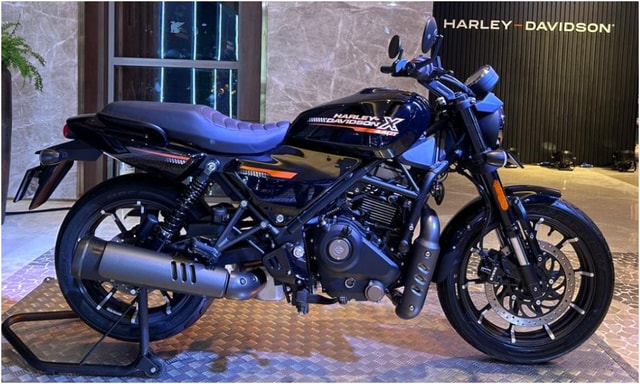 car&bike Team | Dec 6, 2025Harley-Davidson X440T Launched At Rs 2.80 Lakh: Here's What's NewJoining the existing (but now repositioned) X440 lineup is the X440T, featuring a new rear subframe, ride-by-wire and switchable ABS.1 min read
car&bike Team | Dec 6, 2025Harley-Davidson X440T Launched At Rs 2.80 Lakh: Here's What's NewJoining the existing (but now repositioned) X440 lineup is the X440T, featuring a new rear subframe, ride-by-wire and switchable ABS.1 min read car&bike Team | Dec 6, 2025Tata Sierra Variant-Wise Prices Revealed: Check Out How Much Pure And Adventure Trims CostIn a surprising move, Tata has decided to keep the prices of the range-topping variants of the new Sierra under wraps for a few more days.3 mins read
car&bike Team | Dec 6, 2025Tata Sierra Variant-Wise Prices Revealed: Check Out How Much Pure And Adventure Trims CostIn a surprising move, Tata has decided to keep the prices of the range-topping variants of the new Sierra under wraps for a few more days.3 mins read
 Bilal Firfiray | Dec 8, 2025Tata Sierra Review: India’s New Favourite?Marking its return after a few decades, the reborn Sierra has made everyone sit up and take notice. But is it worth the hype?10 mins read
Bilal Firfiray | Dec 8, 2025Tata Sierra Review: India’s New Favourite?Marking its return after a few decades, the reborn Sierra has made everyone sit up and take notice. But is it worth the hype?10 mins read Girish Karkera | Dec 4, 20252026 Honda Prelude First Drive: Domesticated Civic Type RA sporty-looking coupe built to give customers a taste of performance but not at the expense of everyday practicality.5 mins read
Girish Karkera | Dec 4, 20252026 Honda Prelude First Drive: Domesticated Civic Type RA sporty-looking coupe built to give customers a taste of performance but not at the expense of everyday practicality.5 mins read Seshan Vijayraghvan | Nov 29, 2025Mahindra XEV 9S First Drive Review: Big Electric SUV, Bigger ExpectationsThe XEV 9S lands at a time when the EV crowd is growing fast. It’s a big, born-electric, three-row SUV that starts under 20 lakh. It sits close to the XUV700 in size, but the brief is very different. Here’s what it’s like on the road.11 mins read
Seshan Vijayraghvan | Nov 29, 2025Mahindra XEV 9S First Drive Review: Big Electric SUV, Bigger ExpectationsThe XEV 9S lands at a time when the EV crowd is growing fast. It’s a big, born-electric, three-row SUV that starts under 20 lakh. It sits close to the XUV700 in size, but the brief is very different. Here’s what it’s like on the road.11 mins read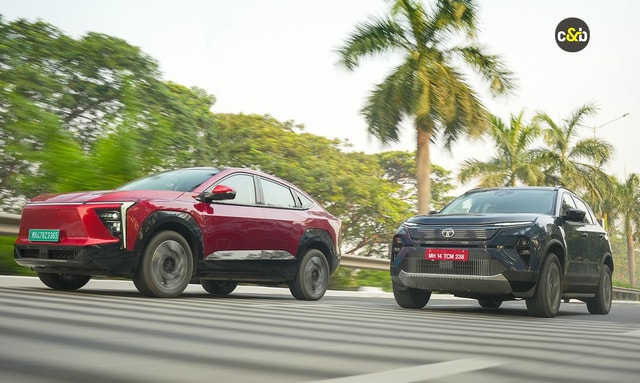 Bilal Firfiray | Nov 26, 2025Tata Harrier EV vs Mahindra XEV 9e: Battle Of India’s Electric TitansWhen India made two electric SUVs battle it out, the winner is the buyer. They get a choice to take home what’s best suited for them – and read on to find out which one is better for YOU.1 min read
Bilal Firfiray | Nov 26, 2025Tata Harrier EV vs Mahindra XEV 9e: Battle Of India’s Electric TitansWhen India made two electric SUVs battle it out, the winner is the buyer. They get a choice to take home what’s best suited for them – and read on to find out which one is better for YOU.1 min read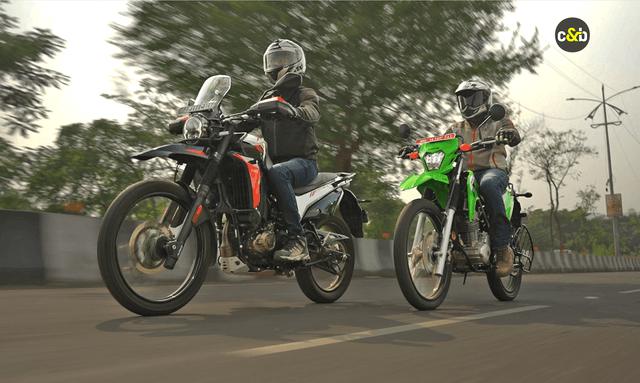 Janak Sorap | Nov 19, 2025Hero Xpulse 210 Vs Kawasaki KLX 230 Comparison Review: Dual-Sport DilemmaWith a price difference of just Rs 12,000, which of the two dual-sport motorcycles is meant for you?1 min read
Janak Sorap | Nov 19, 2025Hero Xpulse 210 Vs Kawasaki KLX 230 Comparison Review: Dual-Sport DilemmaWith a price difference of just Rs 12,000, which of the two dual-sport motorcycles is meant for you?1 min read










































































































































